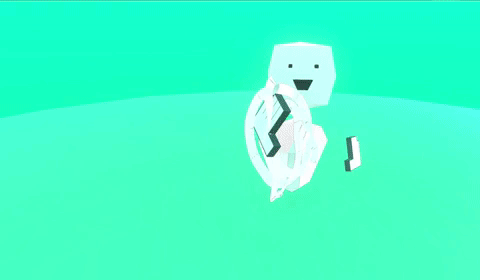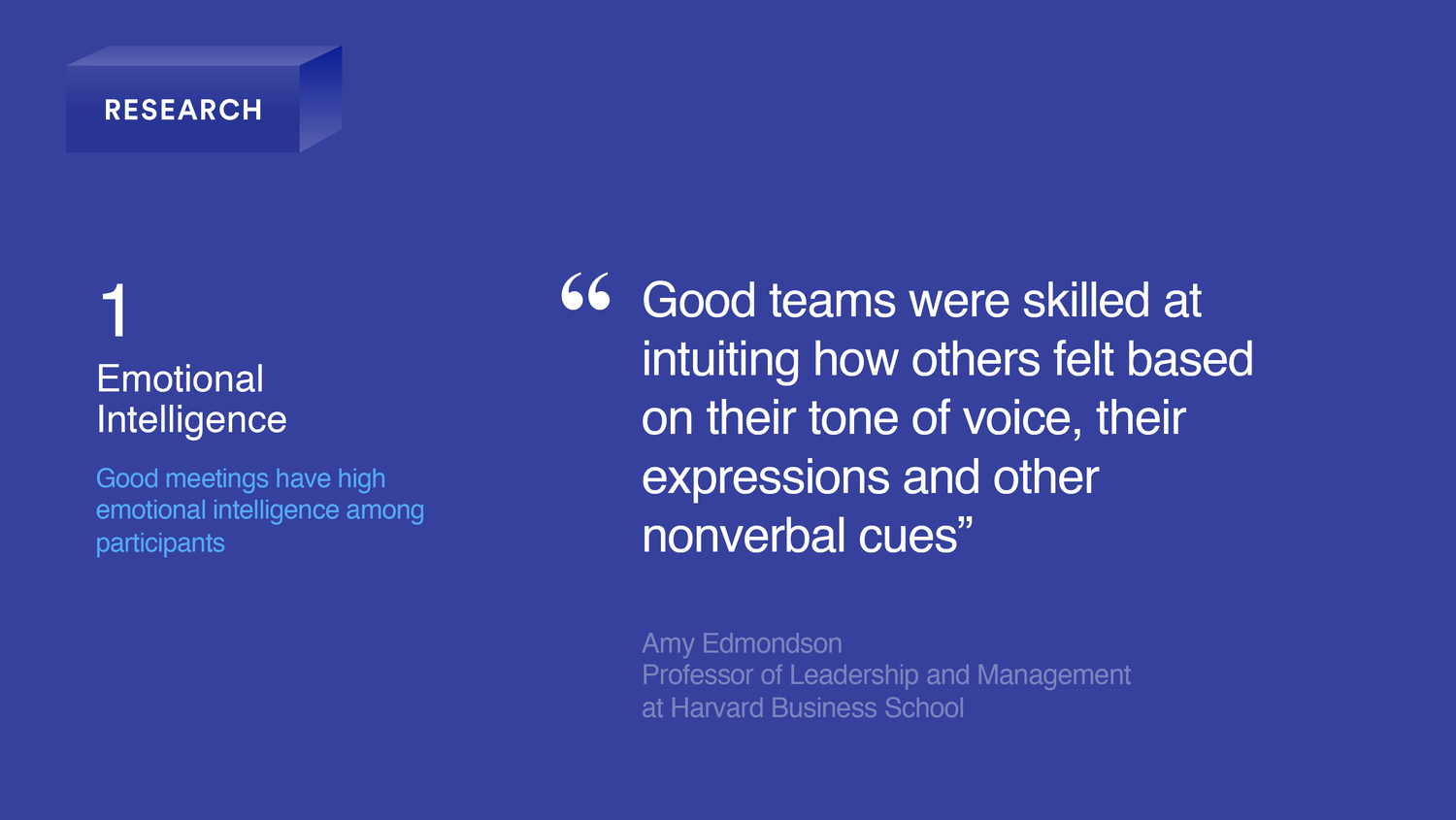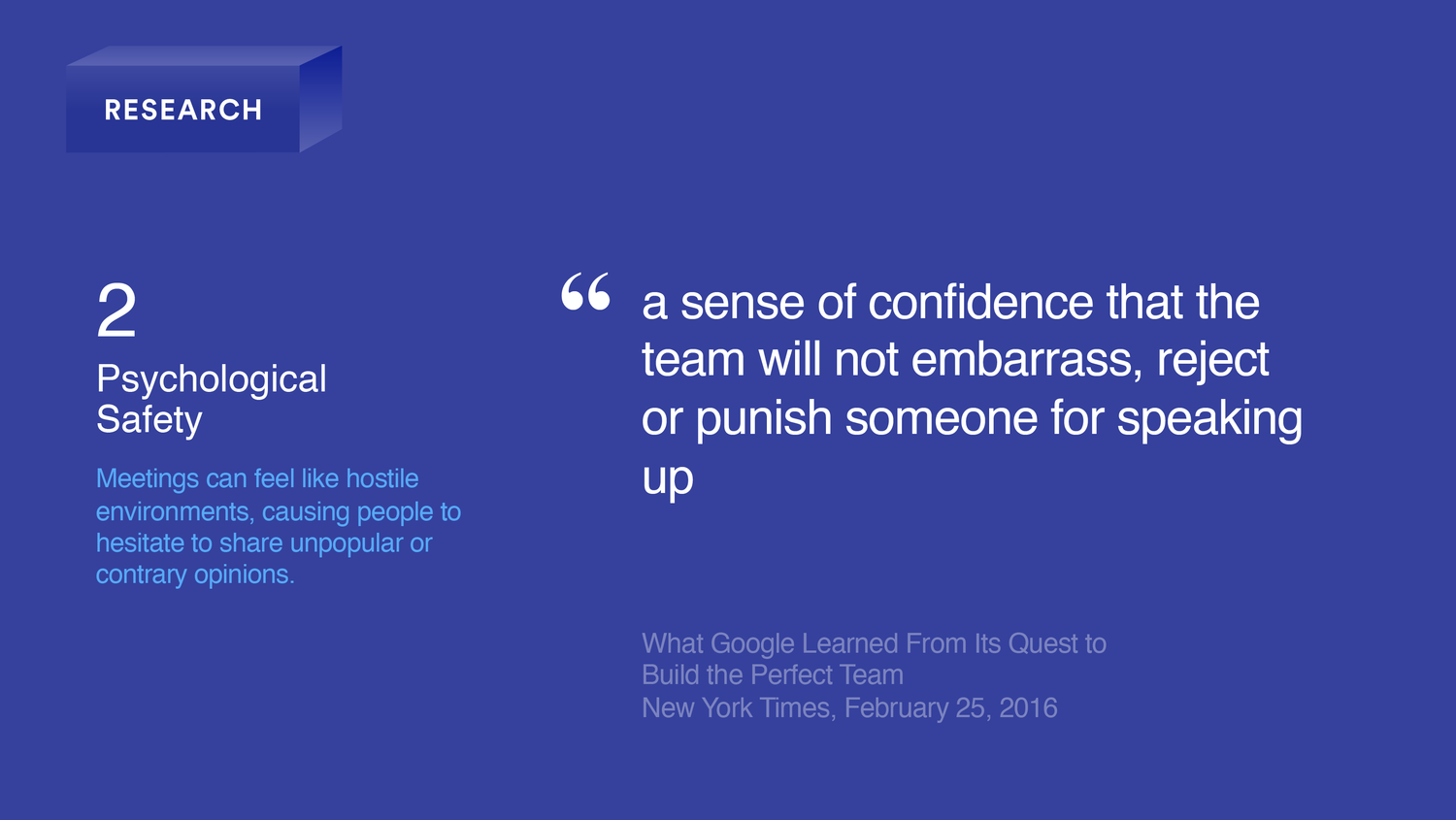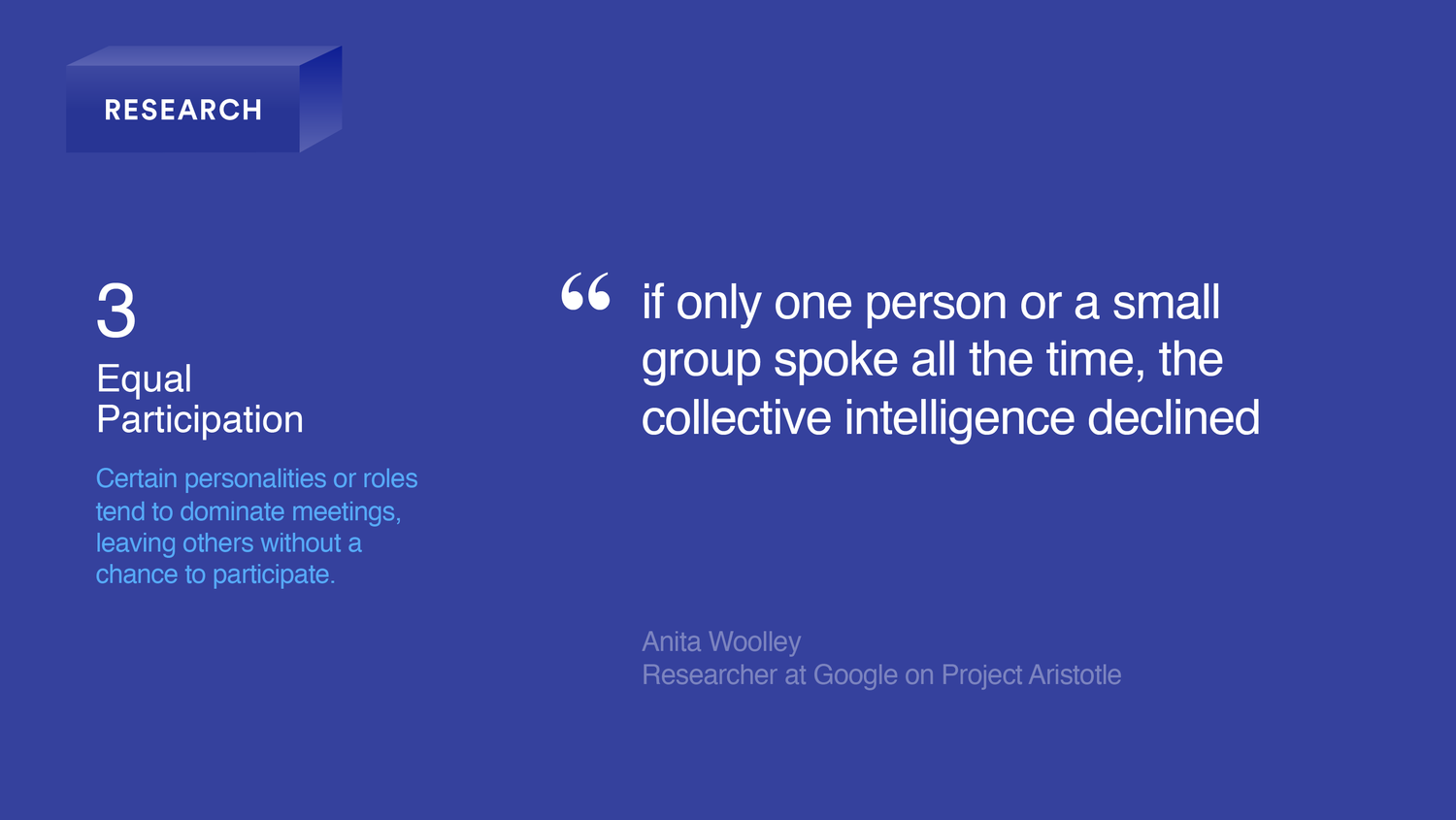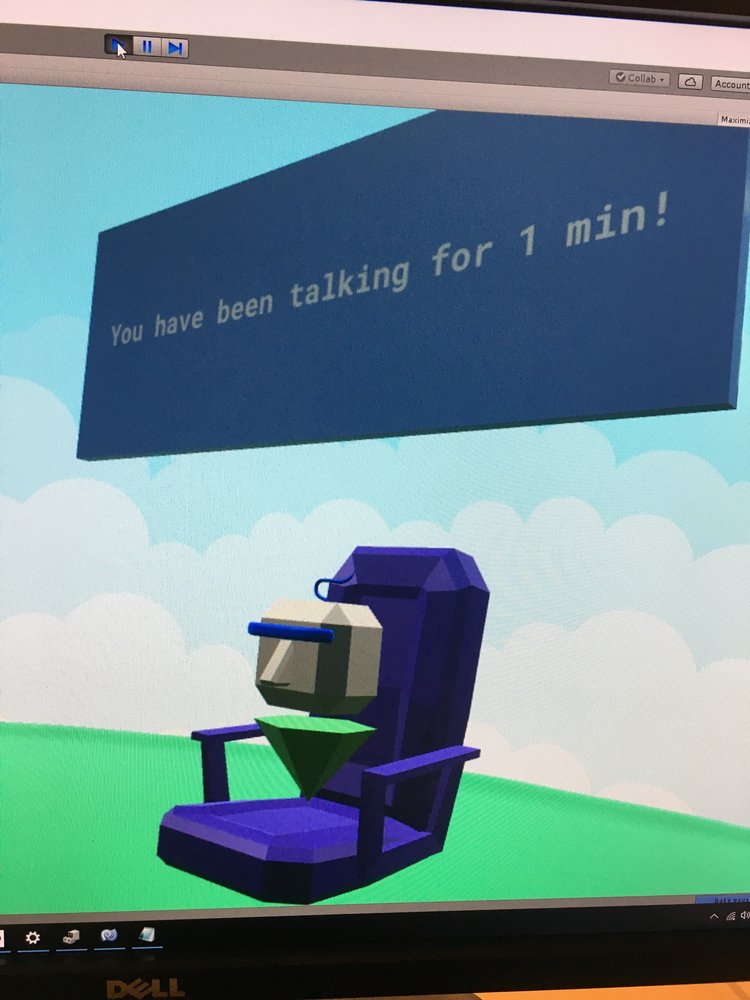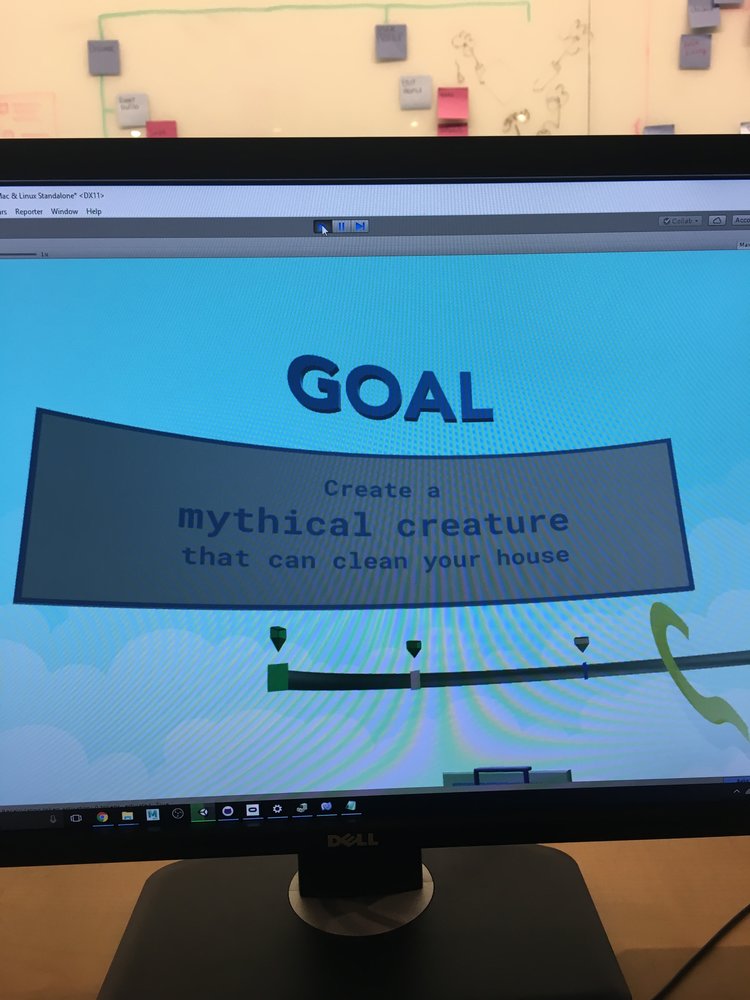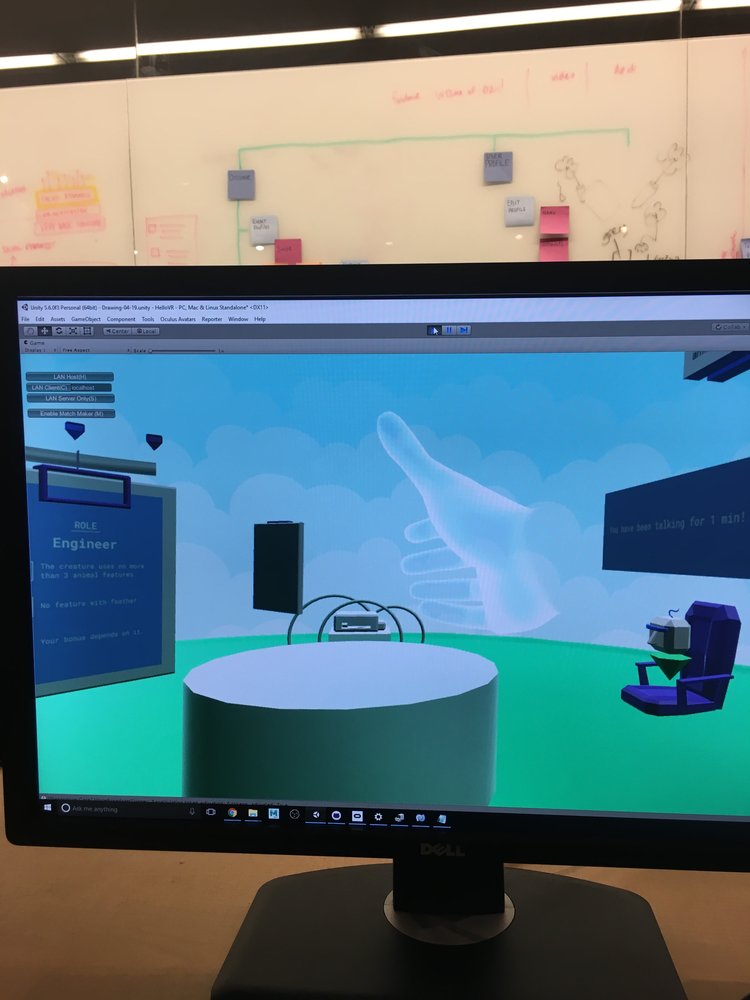Hello VR
exploring collaborative virtual reality spaces and the design patterns that support them
About this project:
Context:
SVA / 2016
Collaborators:
Type:
- Virtual Reality
- Interaction Design
- Collaboration
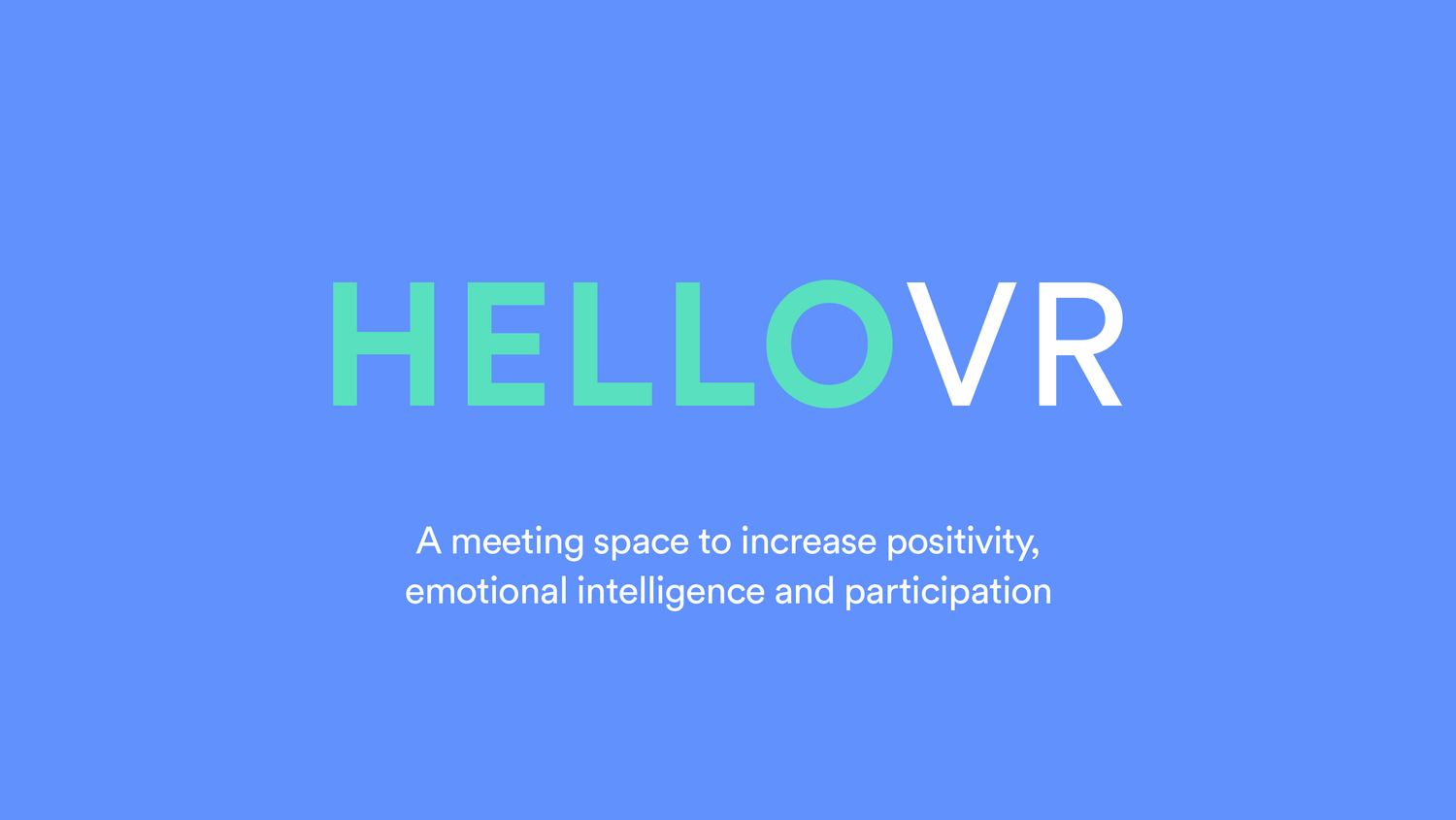
Meetings can really suck. Can VR make them better?
Tech companies such as Facebook are creating virtual meeting spaces where people can hang out and interact in real time. A lot of these efforts aim to replicate the in-person experience as much as possible. But this means even the negative aspects of meetings might be ported over too—things like bias, negativity, and lack of emotional intelligence.
As a team, we thought that virtual reality could provide an interaction layer for meetings that could address some of these softer problems head-on. Hello VR is a playful exploration of the opportunities offered by virtual reality as a meeting medium.
My role was in research, brainstorming interaction ideas, prototyping through bodystorming, designing and modeling the virtual environment, and integrating the 3D assets into Unity.
The problem with meetings—and what makes them work
Through our research, we identified 3 key areas where meetings break down.
- Emotional intelligence: It's hard to read people and understand how they're feeling or what they're thinking. It takes practice and training. A lack of emotional intelligence can lead to breakdowns in communication.
- Psychological safety: Meetings can feel like hostile environments, so participants often feel unsafe sharing unpopular or contrary opinions, especially when their job is involved.
- Equal participation: Certain personalities tend to dominate meetings, leaving very little room for others to participate. This is exacerbated by roles and hierarchy within work environments.
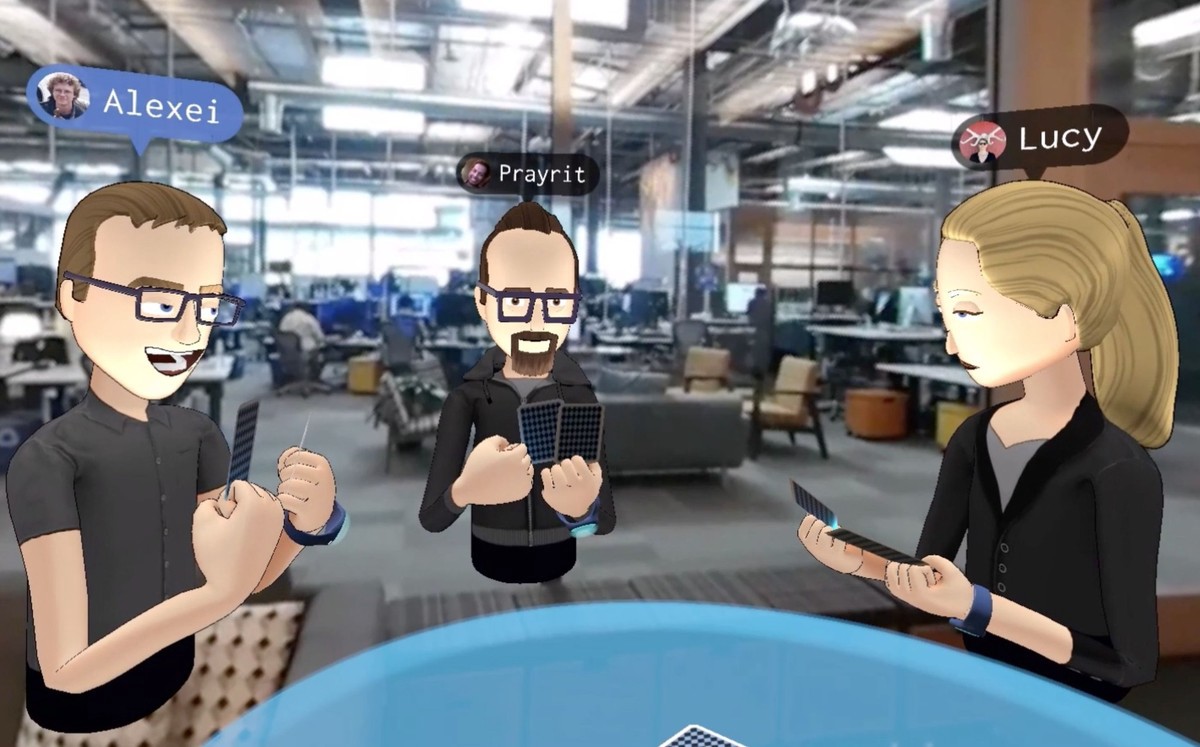
Luckily, there is a way to make meetings more effective: include a skilled facilitator. A well-trained, experienced facilitator will possess emotional intelligence, and create the conditions for psychological safety and equal participation.
So the question became: could the virtual reality interaction layer play the role of a meeting facilitator?
Brainstorming immersive interactions
As a team, we discussed ways in which we imbue a virtual environment with the qualities of a good meeting facilitator. We wanted to take advantage of what VR can do that real world interactions can't, or at least, not as easily.
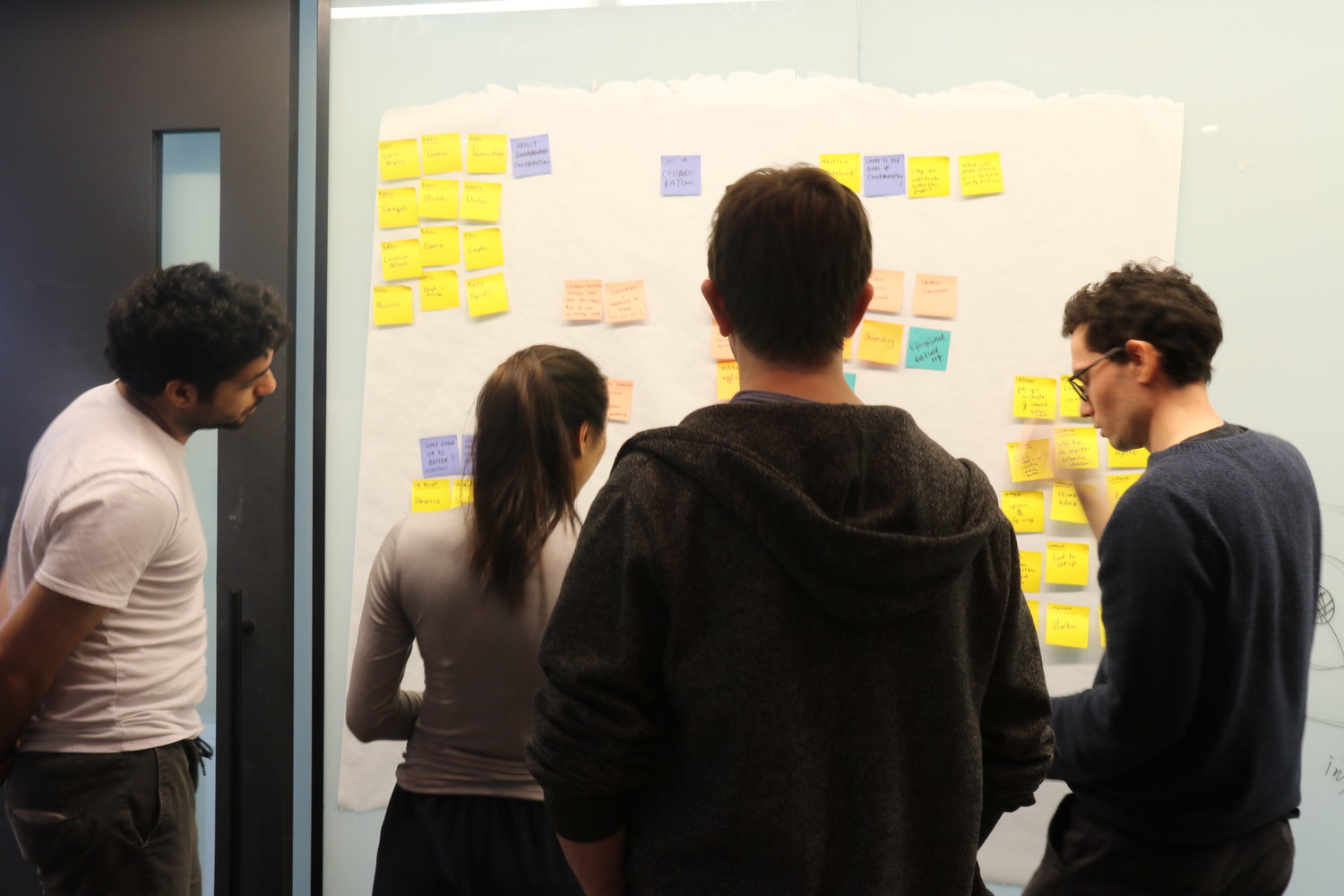
The three concepts in these sketches:
- Decision bomb: Sometimes teams can't come to a decision. What if there were a lighthearted way to apply pressure to the situation and speed up the decision? A "decision bomb" could be set to go off after a set time limit, unless a decision has been reached.
- Negativity/positivity indication: Using natural language processing, we can potentially identify who is being negative—shooting down others' ideas, cutting people off, or being grumpy—and who is contributing positively to the meeting.
- Small talk: When someone is talking too much, can we gently let them know? What if we did that by shrinking them, or shrinking their voice, the longer they spoke?
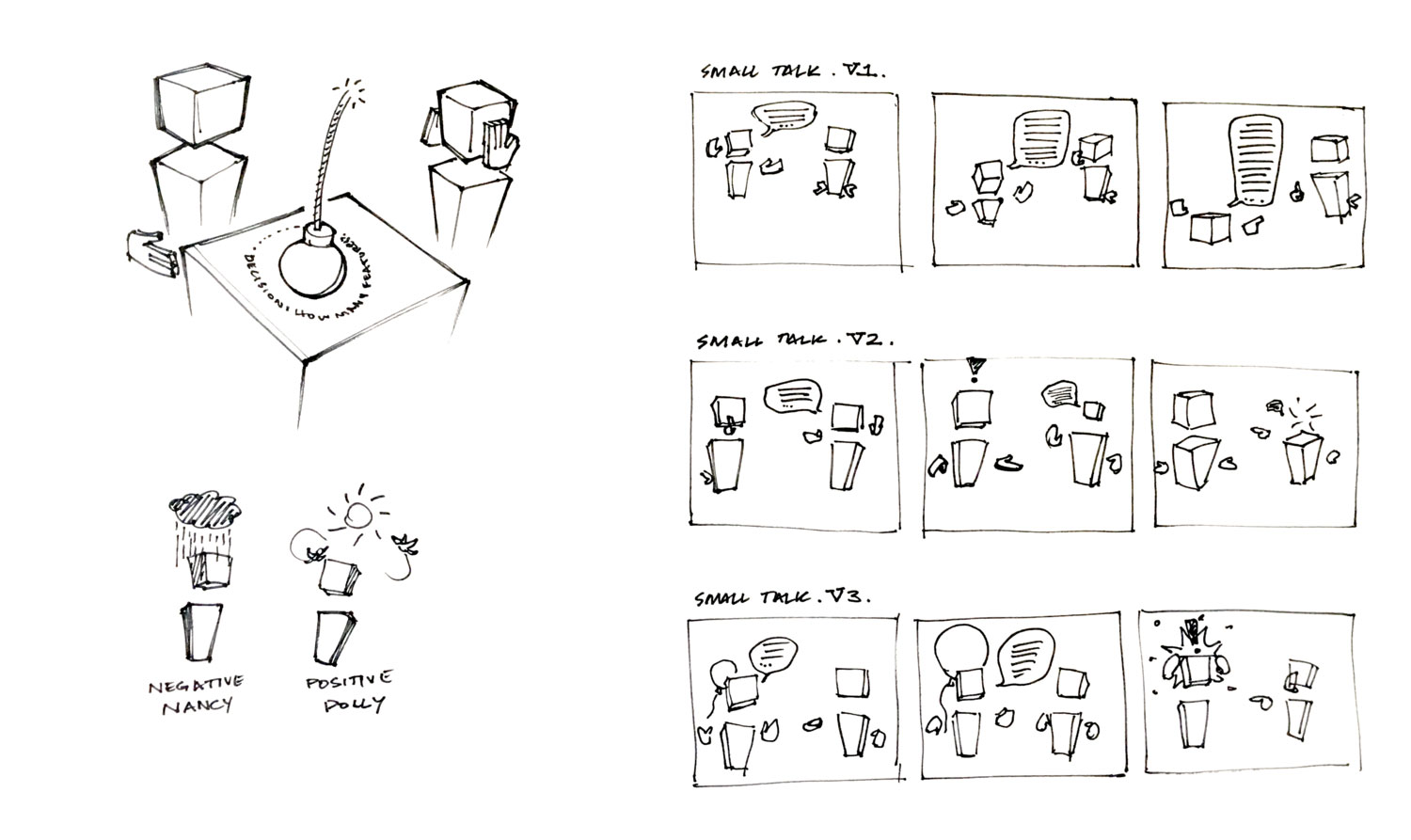
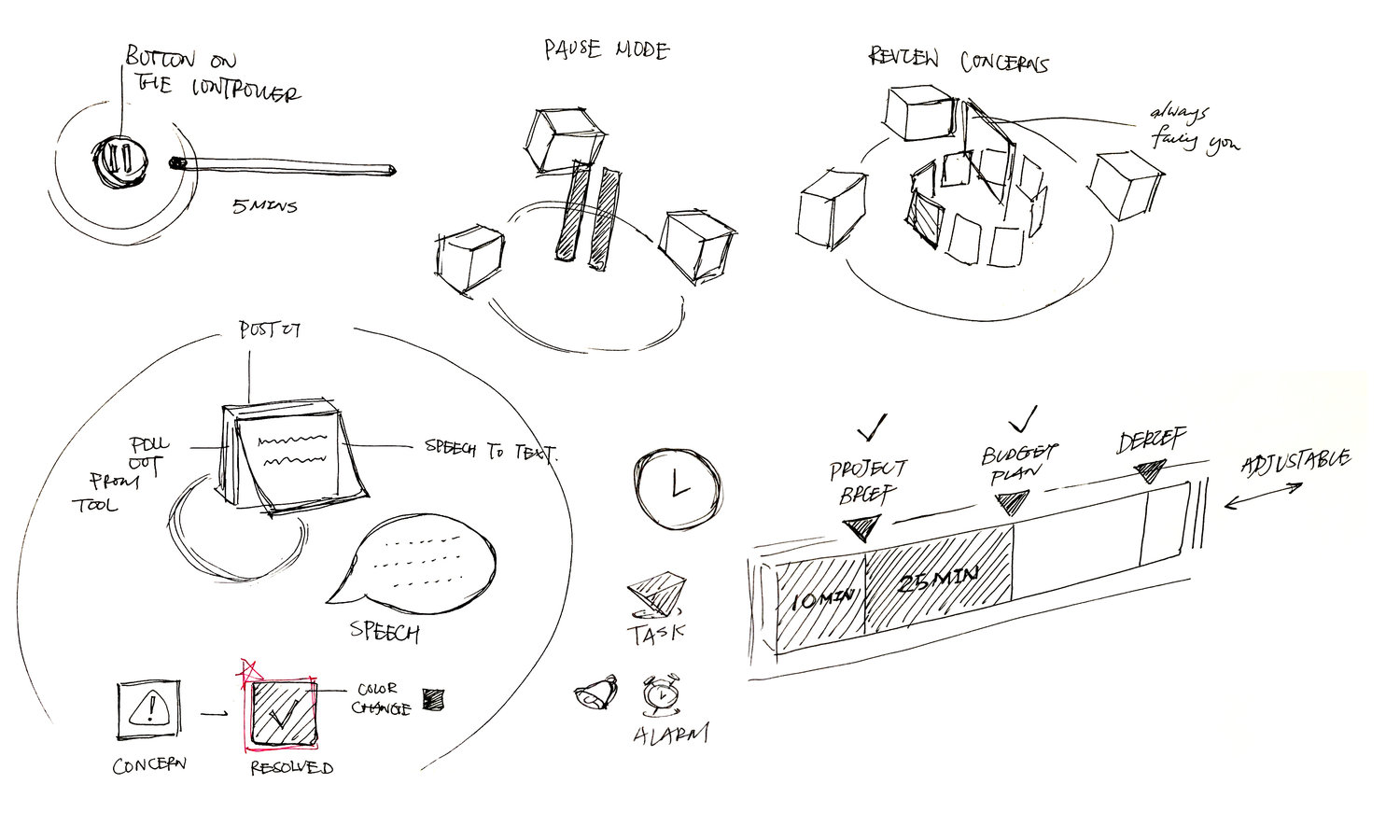
Prototyping IRL
How do you prototype VR interactions quickly and effectively? This was a 7 week project after all. For our first round of prototypes, we conducted bodystorms with unwitting participants.
We set up a scenario for the participants, then one of us acted as the silent VR facilitator, using props such as sticky notes and printouts.
The premise: a team of marketers, engineers, and designers must design a new creature made up of existing animal parts to act as a home assistant.
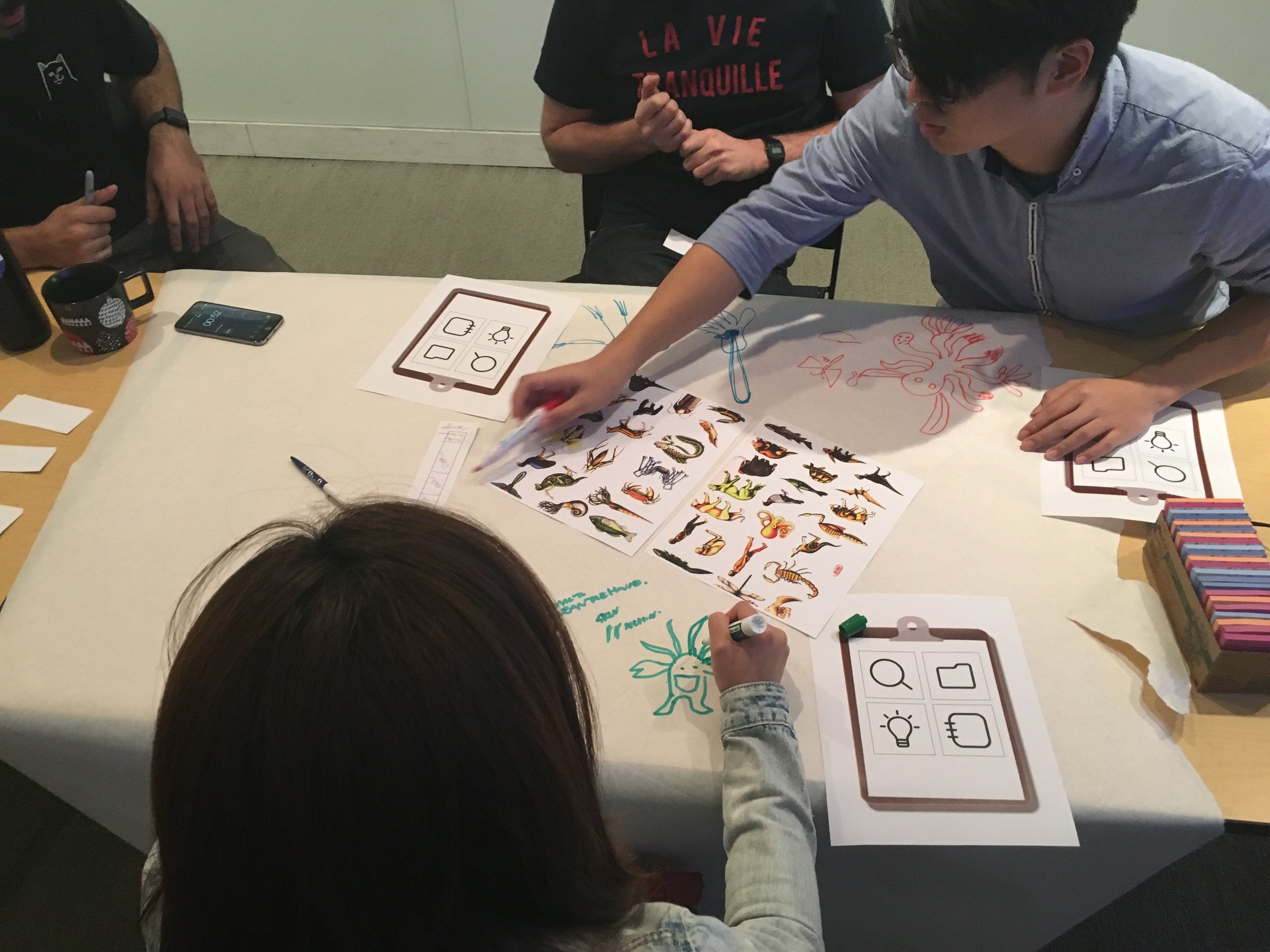
To create conflict, we gave each participant secret goals that directly contradicted others' goals.
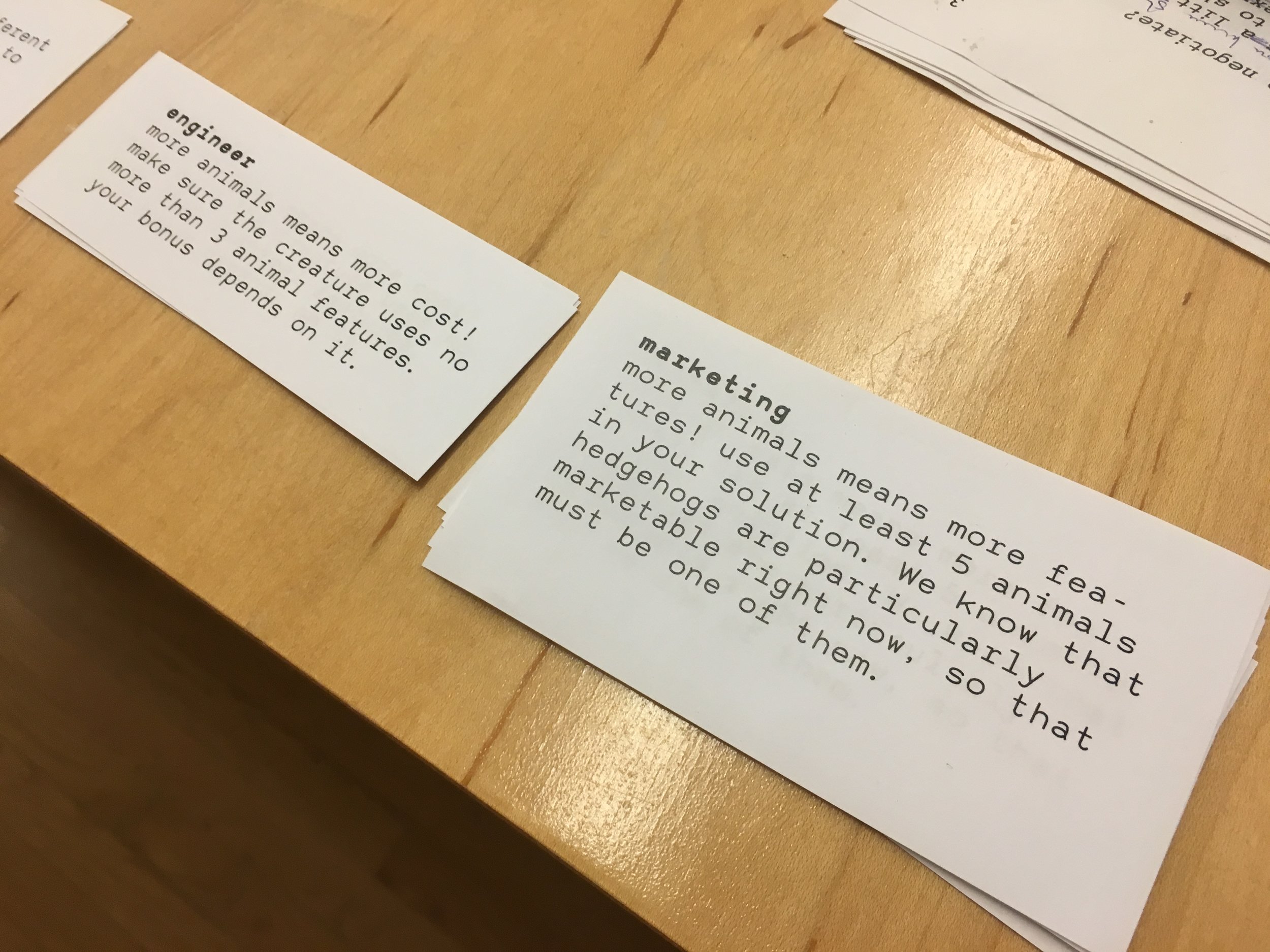
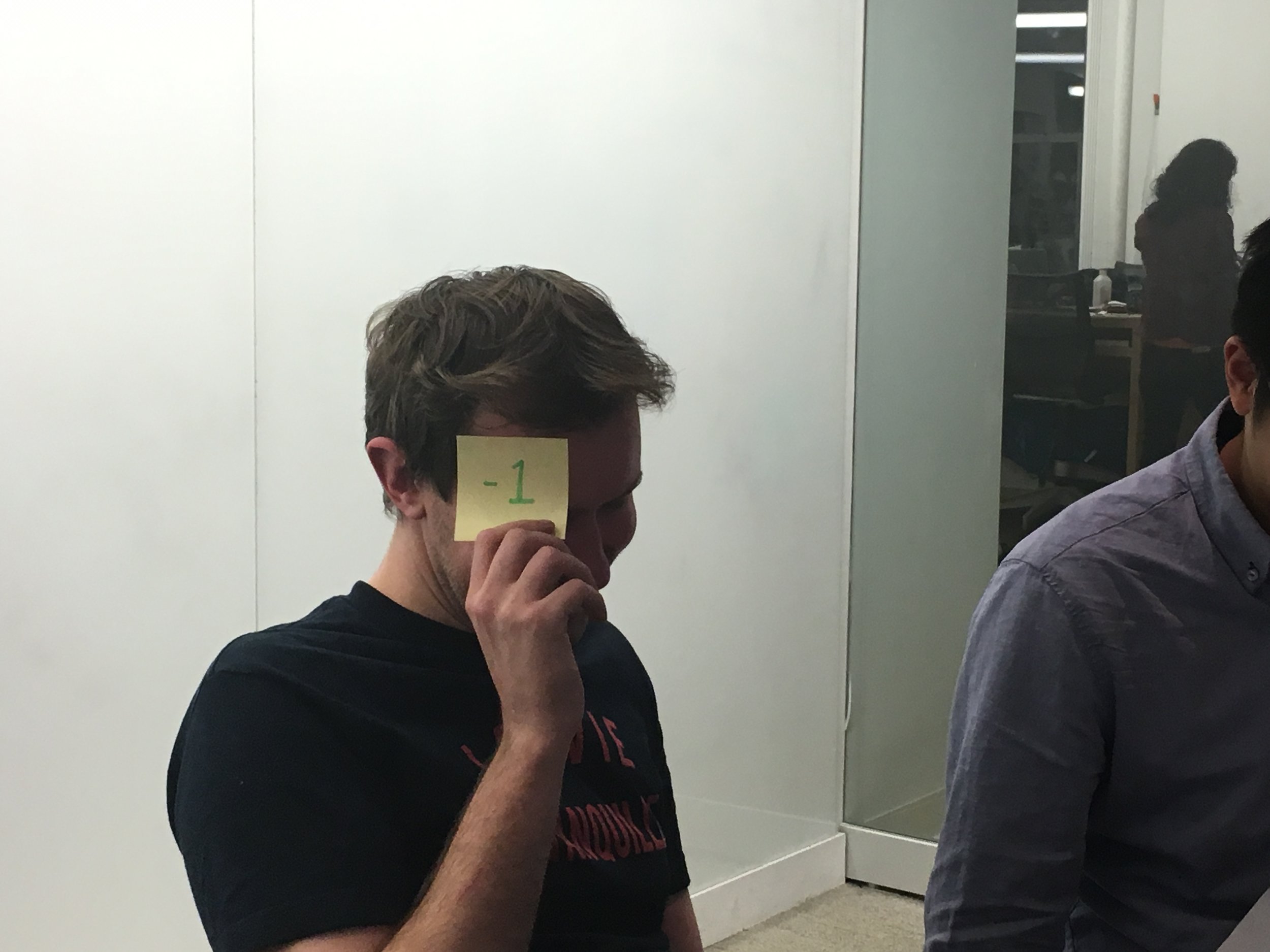
What we learned
From our IRL prototype, we had 3 major takeaways:
- Too many tools are distracting. If there was too much intervention from the "VR facilitator" the participants were unable to focus on the task at hand.
- Avoid public shaming. When we made the negativity points public, the whole team dynamic was affected. People wanted to know what they did wrong, and other teammates were uncomfortable. We realized that with VR, information could be shown asymmetrically, such that only the person being negative is alerted about their negativity, giving them a chance to correct without publicly shaming them.
- Keep the task simple. The premise of creating a composite creature from animal parts was confusing and meant that people were trying to understand what their task was and not actually having a meeting.

Prototyping in VR
Once we had determined which features to include in the VR demo, we moved into Unity3D to create an interactive and immersive prototype. Teammates Alex and Mischa handled the code to create a collaborative drawing experience, while Janel and I worked on the aesthetic direction, and designing and modeling the 3D assets needed for the prototype.
We were able to prototype four features in VR:
1. Negativity Minion
How can you tell when your negative energy is bringing everyone down? The Negativity Minion uses natural language processing to figure that out for you, and let you know—privately—that you need to be more positive.
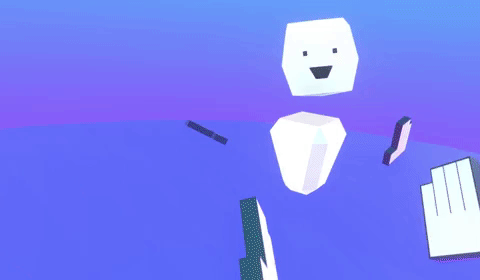
2. Small Talk
The days of one person dominating a meeting are over. If anyone is talking for too long without letting others participate, HelloVR will shrink them to let them know.
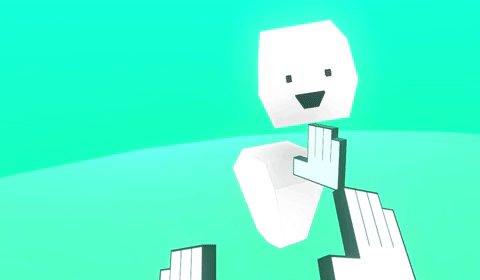
3. Ambiguity Fog
Is someone trying to explain something and not getting their point across? How can you let them know in VR, where there is no body language? Deploy the Ambiguity Fog, which is a sign to slow down and clear things up.
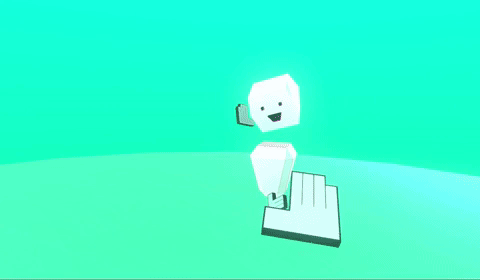
Posivibes
Want to show someone just how much you agree with them? Clap you hands to send Posivibes their way! They can high-five you to release even more Posivibes!
